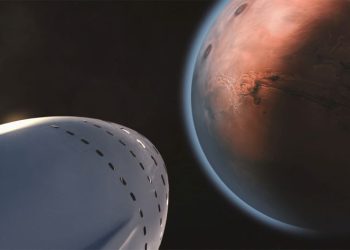In a groundbreaking development, scientists have unveiled a promising method that could significantly advance the search for extraterrestrial life. This remarkable breakthrough utilizes artificial intelligence (AI) to determine with an astonishing 90% accuracy whether a sample contains biological elements or not.
The implications of this discovery are profound, as it may bring us closer to solving the age-old question of whether life exists beyond our planet.
The quest for signs of extraterrestrial life has long captivated the imaginations of scientists and the public alike. This new AI-driven test could be the key to unlocking the mysteries of our universe and uncovering life on other celestial bodies.
What makes this discovery so promising is that it can be applied to existing samples, potentially including those collected by NASA’s Mars Curiosity rover.
The research team behind this innovation fed an AI system data from 134 known samples, which were categorized as either biotic (related to life) or abiotic (not related to life).
The AI was then tasked with identifying new samples, ranging from living organisms to ancient remnants of life and abiotic substances like pure chemicals. Remarkably, the AI achieved a remarkable 90% accuracy rate in distinguishing between these different sample types.
What sets this method apart from previous approaches is that it doesn’t rely on the detection of specific molecules or compounds associated with life. Instead, it analyzes subtle differences in molecular patterns found in various samples.
Moreover, it goes beyond simple categorization by distinguishing between “living” and “fossil” biotic samples, a capability that holds immense potential for future astrobiology missions.
One significant advantage of this AI-powered approach is its resilience to the degradation of organic molecules over time. While traditional methods struggle with samples that have decayed or undergone substantial changes, this new technique continues to perform reliably.
It opens up the possibility of deploying smart sensors on robotic spacecraft, landers, and rovers to search for signs of life before samples return to Earth.
The implications of this discovery extend beyond the search for extraterrestrial life. It has the potential to revolutionize our understanding of Earth’s ancient history and the origins of life on our planet.
Researchers are already inputting data from ancient rocks in various locations worldwide, including Australia and Canada, into this innovative tool.
As we delve deeper into the cosmos and explore the mysteries of our universe, this AI-driven test offers hope that we may finally answer the age-old question:
- Are we alone in the universe, or is life thriving on distant planets? While the journey to confirming the existence of extraterrestrial life is ongoing, this discovery marks a significant step forward, bringing us ever closer to unraveling one of the greatest mysteries of our time.
For any enquiries please, email our editorial team at [email protected]. If you liked this story, kindly sign up for Clariform Newsletter, a handpicked selection of stories that helps you clarify things that matter and gives you clear signals about your world, delivered directly to your inbox.
Please subscribe to our YouTube channel, and join thousands of Clariform on Facebook, Twitter and Instagram.












